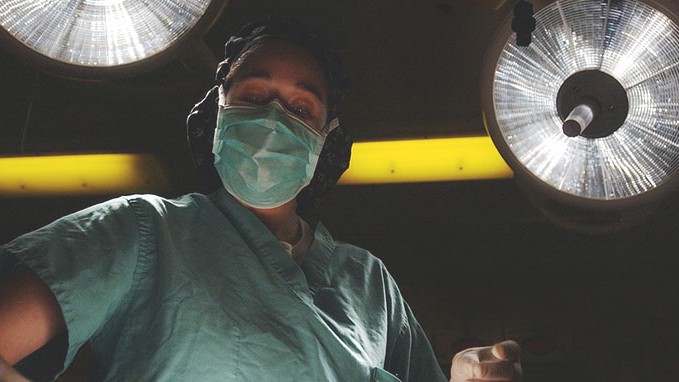Medical electrical equipment faces incredibly stringent standards for safety and reliability. To ensure that electronic medical equipment and systems are held to appropriate levels, the International Electrotechnical Commission (IEC) enforces the 60601 technical standard.
IEC 60601 is far from the only technical standard the IEC enforces. However, IEC 60601 is the most important and common technical standard for electronic medical devices today.
In this article, we’ll break down the history of IEC 60601, its structure, how devices are tested and certified to meet it, and how it might evolve.
Regulatory Framework
Article Guide
IEC 60601 is the internationally agreed-upon technical standard, but it’s not the only one. Different nations also implement their own manufacturer safety performance requirements and often use IEC 60601 as a basis for these regulations.
At the same time, medical device manufacturers have standards and regulations aside from IEC 60601 that they must meet. For example, the International Organization for Standardization (ISO) issues ISO 13485 for medical device manufacturers.
This regulation requires that device manufacturers have a quality management system to provide medical devices that meet customer and regulatory requirements. To achieve and maintain IEC 60601 certification on their products, a company must also implement the practices and systems required by ISO 13485.
Structure of IEC 60601
IEC 60601 was published in 1977 when electricity-powered medical devices became increasingly common in hospitals worldwide. IEC 60601 pertains specifically to medical devices and their ability to protect healthcare providers and patients.
IEC 60601 consists of almost one hundred general, collateral, and particular standards governing electronic medical devices. Let’s focus on the two most important standards every medical-grade device must meet: IEC 60601-1 and IEC 60601-1-2.
- IEC 60601-1: This basic standard governs medical devices’ safety and essential performance before they can be sold. A medical computer that meets this standard is considered safe, reliable, and will not accidentally shock its user or patient while in use.
- IEC 60601-1-2: This standard governs the safety and effectiveness of electromagnetic compatibility of medical devices. A device that meets this standard will not interfere with other electronic devices and is protected from electromagnetic disturbances. This is critical for healthcare environments, where multiple computers or machines must operate together.
Testing and Certification
Given how critical meeting these standard requirements is for medical devices, manufacturers must have a well-developed plan for getting their products certified. Before submitting their device for testing, a research and development team must determine the regulations they must meet.
IEC 60601-1 and IEC 60601-1-2 are the standard for all medical devices, but further certifications will have to be met depending on the device’s purpose.
Once these requirements are identified, they can be integrated into the product’s design. Manufacturers must also conduct a risk analysis and management plan, which identifies potential dangers the device faces and how they will be managed.
For example, a common risk for medical devices is damage to the electronics from water or other liquids. This risk can be managed by implementing a waterproof casing to protect those components.
Testing can begin after this is done and the necessary measures are taken. While manufacturers can run pre-tests themselves, an official IEC 60601 test must be performed by an independent third party.
Furthermore, only laboratories with ISO/IEC 17025 certification can perform these tests and issue the certification report. These tests include:
- Physical durability testing: Depending on the device, various push or drop tests are
- conducted to ensure it can withstand impacts and continue functioning safely.
- Surge protection testing: Laboratories conduct tests to determine the device’s ability to withstand and safeguard against artificial power surges, ensuring the safety of both users and patients.
- Emissions testing: IEC 60601-1-2 requires that devices limit how much electromagnetic energy they emit along power lines (conducted emissions) and into the air around them (radiated emissions). Limiting these emissions is critical to preventing electromagnetic interference.
- Immunity testing: IEC 60601-1-2 also requires that devices be protected against electromagnetic disturbances from other devices. This is accomplished by adding a metallic screen that absorbs electromagnetic interference as it travels through the air.
Updates and Revisions
Given that the world of medical technology is constantly evolving, IEC 60601 must evolve with it. Since its inception in 1977, the series was rehauled entirely. It was republished in 1988 and 2005 to reflect changes in priorities regarding device safety.
Along with these significant revisions, numerous amendments and updates to IEC 60601 address ambiguities or questions that arise with new forms of technology.
For example, in 2020, the IEC published version 3.2 of IEC 60601-1, which updated risk management, usability, and software standards. With every change, manufacturers have had to adjust their practices to maintain certification.
There are also scheduled updates to the various standards, amendments, and revisions. IEC 60601-1-2 is expected to receive its fourth edition sometime in 2027. The upcoming changes in the fourth edition of these standards have yet to be finalized.
However, their importance will increase due to the rising popularity of home healthcare environments and the need for medical devices to work in uncontrolled settings outside of hospitals.
IEC 60601 Certified Medical Computers
If you work in a healthcare environment, you must use medical-grade computers that are IEC 60601 certified. Only devices that have met this crucial regulation are considered safe, especially when patients’ lives are on the line.
If your healthcare organization is looking to upgrade its computers, consider Cybernet Manufacturing’s range of specialized medical-grade computers. Our computers are specifically designed for medical environments and are fully IEC 60601-1 and 60601-1-2 certified to guarantee the safety of users and patients alike.
Contact our experts today for help selecting the medical computer that suits your organization’s needs.
Join the conversation and connect with us on this and other relevant topics. Follow us on Facebook, Twitter, and LinkedIn.
Why OEM Medical Device Manufacturers Are Utilizing Rugged Tablets to Improve Medical Grade Technology
January 14, 2016
Healthcare is a demanding field and relies heavily upon utilizing the best, most up-to-date equipment to help doctors and nurses provide the highest quality medical services. As advances in how procedures are…
0 Comments3 Minutes
You Can't
Learn from a Pop-up
But we can deliver knowledge to your inbox!
We dive deep in the industry looking for new trends, technology, news, and updates. We're happy to share them with you.
Knowledge, News, and Industry Updates Right in Your Inbox



